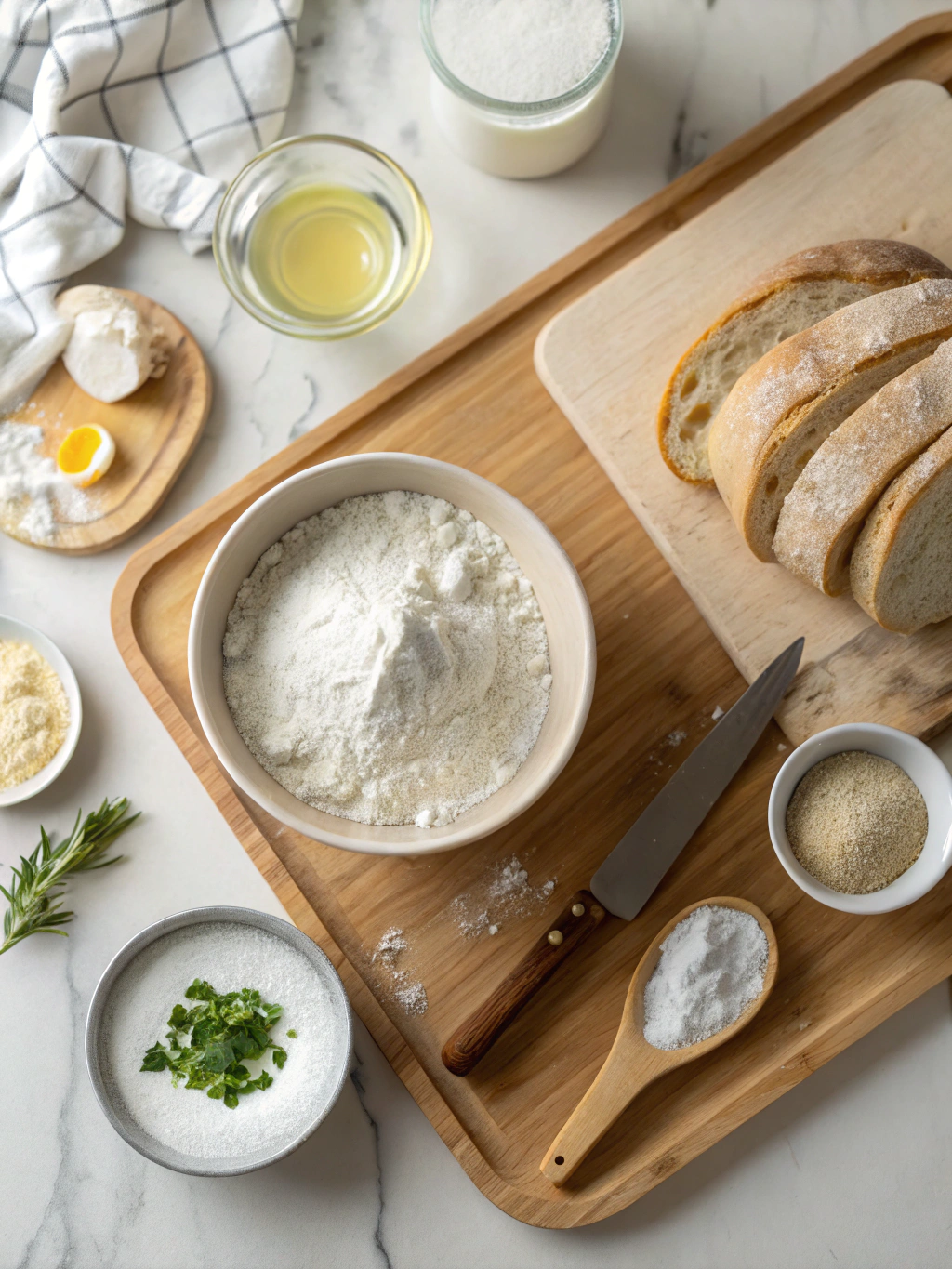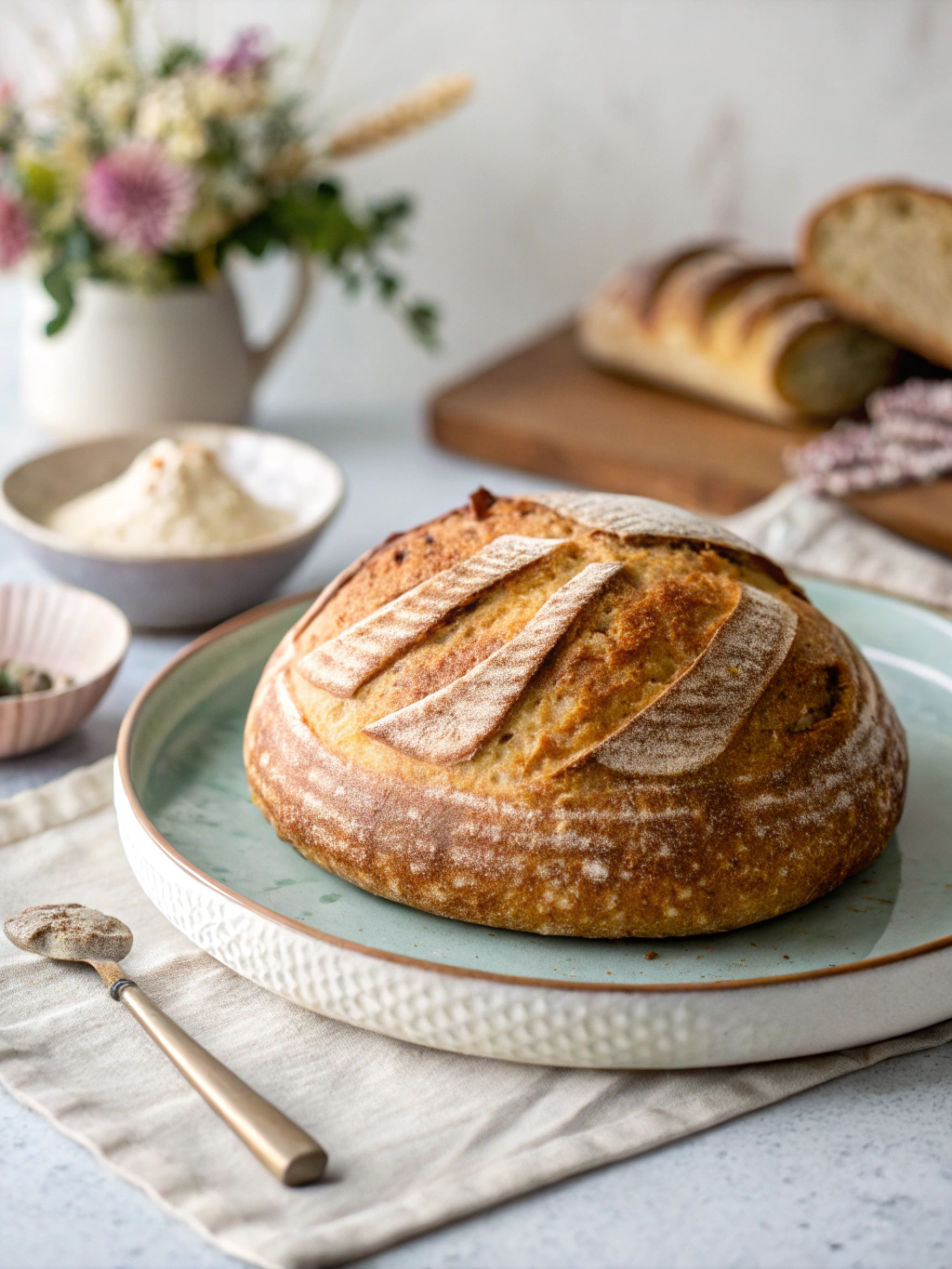Oh, friends, the smell of freshly baked bread…is there anything more intoxicating? Imagine this: a warm, crackling crust giving way to a chewy, airy interior, with that signature tangy kiss that only comes from a truly excellent sourdough bread. The first bite is pure heaven, the crisp crust yielding to the soft, flavorful crumb, leaving you craving more.
This isn’t just any bread recipe; it’s the sourdough bread recipe. I remember my grandmother patiently teaching me the secrets of breadmaking, the gentle coaxing of the dough, and the anticipation as it rose. This recipe embodies that same love and care, but simplified for the modern baker. It’s more than just bread; it’s an experience!
This recipe is perfect for weekend baking projects, impressing your friends and family, or simply enjoying a slice (or two!) with your morning coffee. After mastering this starter sourdough bread recipe, you’ll never look at store-bought bread the same way again.
Why You’ll Love This Recipe
- Achieve bakery-quality sourdough bread at home with our easy-to-follow instructions.
- That quintessential tangy flavor that makes sourdough so irresistible.
- A beautifully open crumb that’s perfect for soaking up olive oil or your favorite spread.
- Impress your friends and family with your newfound baking skills!
- Learn a simple feeding schedule so your starter will be ready for future baking recipes.
- Enjoy freshly baked bread any time, with minimal effort.
- It’s made with only four ingredients!
Ingredients Breakdown

Let’s talk ingredients! Each one plays a crucial role in creating the perfect loaf of sourdough bread.
- Sourdough Starter: This is the heart and soul of our bread. A lively, active starter is essential for creating the signature tangy flavor and airy texture. If your starter is sluggish, it may need more frequent feedings.
- Bread Flour: The high gluten content of bread flour is what gives sourdough its incredible structure. While you can use all-purpose flour in a pinch, the texture won’t be quite as chewy. Look for bread flour with a protein content of around 12-14%.
- Water: Use filtered water for the best results. The temperature of the water plays a crucial role in controlling the fermentation process. We’ll be using lukewarm water (around 85-90°F) to encourage activity.
- Salt: Don’t skimp on the salt! It enhances the flavor of the bread and also helps to control the fermentation. Use sea salt or kosher salt for best results. Remember, salt isn’t optional; it’s crucial for flavor and structure.
Kitchen Tools Needed
Before diving into the recipe, make sure you have these essential tools on hand. Let’s get ready to turn our kitchens into a baking paradise where amazing sourdough bread comes to life.
- Kitchen scale
- Large mixing bowl
- Dough scraper
- Banneton basket or proofing bowl
- Dutch oven or baking stone
- Lame or sharp knife
- YOUR GO-TO DUTCH OVEN: A flawless pairing of form and function that doesn’t quit. The Lodge Dutch Oven not only makes yo…
- WHAT IS PORCELAIN ENAMEL ON CAST IRON. It is glass that becomes bonded to the cast iron at high temperatures. A particul…
- EASY TO COOK AND CLEAN: The porcelain enameled interior has a smooth finish that minimizes sticking, promotes carameliza…
How To Make It
Follow these step-by-step instructions for the perfect sourdough bread loaf.
- Autolyse: In a large bowl, combine bread flour and water. Mix until just combined, then let rest for 30-60 minutes.
- Incorporate Starter and Salt: Add your active sourdough starter and salt to the autolysed dough. Mix well with your hands or a dough whisk until fully incorporated. This step is important and will activate your starter.
- Bulk Fermentation: Place the dough in a lightly oiled bowl, cover, and let it rise for 4-6 hours at room temperature, performing stretch and folds every 30-60 minutes for the first 2-3 hours.
- Pre-Shape: Gently turn the dough out onto a lightly floured surface and pre-shape it into a round. Let it rest for 20 minutes.
- Final Shape: Shape the dough into a tight boule or batard. Place it in a well-floured banneton basket (or a bowl lined with a floured kitchen towel). (
- Cold Proof: Cover the basket and refrigerate for 12-24 hours. This slow fermentation develops the complex flavors of the sourdough.
- Preheat Oven: Preheat your oven to 500°F (260°C) with your Dutch oven inside. The high temperature creates a fantastic crust. Once the oven is preheated, carefully remove the Dutch oven.
- Score and Bake: Gently turn the dough out of the basket into the preheated Dutch oven. Score the top of the loaf with a lame or sharp knife.
- Covered Bake: Cover the Dutch oven and bake for 20 minutes.
- Uncovered Bake: Remove the lid and bake for another 25-35 minutes, or until the crust is a deep golden brown. The internal temperature should reach 205-210°F (96-99°C).
- Cool: Let the sourdough bread cool completely on a wire rack before slicing. Patience is key here; slicing too early can result in a gummy texture.
- Enjoy: Finally, slice, serve, and enjoy your homemade sourdough bread!
Pro Tips For Success
- Use a kitchen scale: Weighing your ingredients ensures accuracy and consistent results.
- Don’t over-knead: Over-kneading can result in a tough loaf. Aim for a well-developed, but not overly tight, dough.
- Master your starter: A strong, active starter is the key to successful sourdough.
- Proofing is crucial: Don’t rush the proofing process! Give the dough ample time to rise, especially during bulk fermentation.
- Experiment with hydration: Adjusting the hydration (water content) of your dough can impact the texture of the crumb.
- Listen to your dough: Pay attention to how the dough feels and behaves throughout the process.
Variations and Dietary Swaps
- Rosemary Garlic: Add 2 tablespoons of chopped fresh rosemary and 2 cloves of minced garlic to the dough during the mixing process.
- Spelt Sourdough: Substitute up to 50% of the bread flour with spelt flour for a slightly nutty flavor. Achieving a perfect crumb is still possible, as the spelt adds its own touch to the sourdough bread.
- Gluten-Free: Use a high-quality gluten-free bread flour blend. Note that the texture will be different from traditional sourdough.
Serving Suggestions
- Serve warm with a pat of butter and a sprinkle of sea salt.
- Use it to make avocado toast for a quick and delicious breakfast.
- Create gourmet sandwiches with your favorite fillings.
- Serve alongside a hearty soup or stew.
Storage and Reheating
Store leftover sourdough bread in a bread bag or an airtight container at room temperature for up to 3 days. For longer storage, slice and freeze the bread. To reheat, thaw the slices and toast them in a toaster or oven. Reheating frozen sourdough will change the texture slightly, making it best when toasted.
What’s your favorite way to enjoy sourdough bread? Share your comments, rate this recipe, and tag @CulinaryCraving on Instagram and Pinterest with your beautiful loaves!
Making sourdough bread at home might seem intimidating, but with this recipe, you’ll be slicing into a perfect loaf in no time! Don’t be afraid to experiment and have fun. I can’t wait to hear about your sourdough baking adventures!
Frequently Asked Questions

Perfect Sourdough Bread with Open Crumb
Ingredients
- Sourdough Starter: This is the heart and soul of our bread. A lively active starter is essential for creating the signature tangy flavor and airy texture. If your starter is sluggish, it may need more frequent feedings.
- Bread Flour: The high gluten content of bread flour is what gives sourdough its incredible structure. While you can use all-purpose flour in a pinch the texture won’t be quite as chewy. Look for bread flour with a protein content of around 12-14%.
- Water: Use filtered water for the best results. The temperature of the water plays a crucial role in controlling the fermentation process. We’ll be using lukewarm water around 85-90°F to encourage activity.
- Salt: Don’t skimp on the salt! It enhances the flavor of the bread and also helps to control the fermentation. Use sea salt or kosher salt for best results. Remember salt isn’t optional; it’s crucial for flavor and structure.
Instructions
- Autolyse: In a large bowl, combine bread flour and water. Mix until just combined, then let rest for 30-60 minutes.
- Incorporate Starter and Salt: Add your active sourdough starter and salt to the autolysed dough. Mix well with your hands or a dough whisk until fully incorporated. This step is important and will activate your starter.
- Bulk Fermentation: Place the dough in a lightly oiled bowl, cover, and let it rise for 4-6 hours at room temperature, performing stretch and folds every 30-60 minutes for the first 2-3 hours.
- Pre-Shape: Gently turn the dough out onto a lightly floured surface and pre-shape it into a round. Let it rest for 20 minutes.
- Final Shape: Shape the dough into a tight boule or batard. Place it in a well-floured banneton basket (or a bowl lined with a floured kitchen towel). (
- Cold Proof: Cover the basket and refrigerate for 12-24 hours. This slow fermentation develops the complex flavors of the sourdough.
- Preheat Oven: Preheat your oven to 500°F (260°C) with your Dutch oven inside. The high temperature creates a fantastic crust. Once the oven is preheated, carefully remove the Dutch oven.
- Score and Bake: Gently turn the dough out of the basket into the preheated Dutch oven. Score the top of the loaf with a lame or sharp knife.
- Covered Bake: Cover the Dutch oven and bake for 20 minutes.
- Uncovered Bake: Remove the lid and bake for another 25-35 minutes, or until the crust is a deep golden brown. The internal temperature should reach 205-210°F (96-99°C).
- Cool: Let the sourdough bread cool completely on a wire rack before slicing. Patience is key here; slicing too early can result in a gummy texture.
- Enjoy: Finally, slice, serve, and enjoy your homemade sourdough bread!



